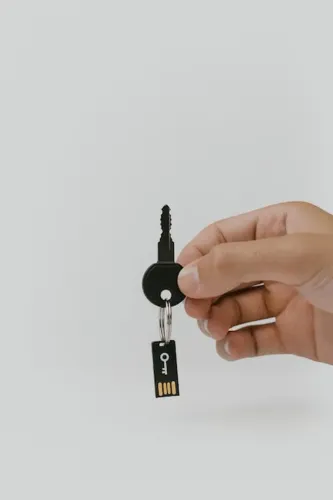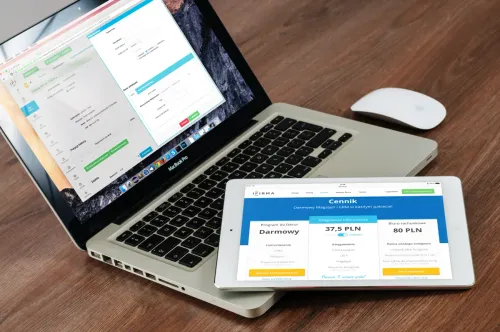In today's fast-paced digital landscape, blogging has become more than just a hobby; it's a powerful medium for sharing ideas, information, and experiences with the world. With millions of blogs covering a diverse range of topics, it's crucial for bloggers to stand out from the crowd and ensure their content reaches as wide an audience as possible. One of the key strategies to achieve this is through responsive design.
Responsive design is not a new concept, but its significance has grown exponentially with the rise of mobile devices and varying screen sizes. In essence, responsive design ensures that your blog or website looks and functions seamlessly across different devices, from desktop computers to smartphones and everything in between. Let's delve into why responsive design is paramount in the world of blogging.
Mobile Dominance
The dominance of mobile devices in internet usage cannot be overstated. With more people accessing the web through smartphones and tablets, it's imperative that your blog is optimized for these platforms. A responsive design ensures that your content adapts to various screen sizes without compromising its readability or functionality. Users should be able to enjoy a consistent and pleasant experience regardless of the device they are using.
Imagine a potential reader stumbling upon your blog post via a social media link on their smartphone. If your blog isn't responsive, they might encounter a clunky and distorted layout that's hard to navigate. Frustration might drive them away from your blog, and you could miss out on a valuable reader or even a potential follower.
Search Engine Optimization (SEO)
Search engines like Google consider user experience as a significant factor in ranking websites. Responsive design plays a critical role in providing a positive user experience, which can indirectly impact your blog's SEO performance. Google, for instance, rewards websites that are mobile-friendly with better search engine rankings. If your blog isn't optimized for mobile devices, it's likely to rank lower in search results, reducing its visibility and discoverability.
By embracing responsive design principles, you're not only catering to your readers but also aligning with the criteria that search engines value when determining a website's ranking
Consistency in Branding
Blogs often serve as personal brands or platforms for individuals to showcase their expertise and creativity. Consistency in branding is key to establishing a strong online presence. A responsive design ensures that your branding elements, such as logos, colors, and fonts, remain intact across all devices.
When readers switch from a desktop to a mobile device, they should still recognize your blog's identity. A consistent branding experience fosters trust and familiarity, encouraging readers to engage with your content across various devices.
Enhanced User Experience
User experience is the heart of blogging success. Readers today have high expectations for websites they visit. They demand fast loading times, easy navigation, and content that is visually appealing. Responsive design contributes to an enhanced user experience by addressing these expectations.
A well-optimised responsive blog loads quickly on all devices, reducing bounce rates and increasing the likelihood of readers exploring multiple pages. Moreover, a user-friendly navigation menu that adapts to different screen sizes makes it easier for readers to find the content they're interested in. This, in turn, leads to longer visit durations and a higher likelihood of readers returning for more.
Social Media Sharing
Social media is an integral part of blogging promotion. When readers find your content valuable, they're likely to share it with their followers. However, if your blog isn't responsive, shared links might not display properly on mobile devices, resulting in a poor user experience for those who click on the links.
Responsive design ensures that your blog posts and pages are shareable across social media platforms, regardless of the device used to access them. This extends the reach of your content and encourages more shares, likes, and engagement.
Adapting to Future Devices
The landscape of digital devices is constantly evolving. New smartphones, tablets, and other gadgets with varying screen sizes and resolutions continue to emerge. By embracing responsive design, you future-proof your blog to some extent. Your content will be well-prepared to adapt to upcoming devices without requiring major overhauls.
This adaptability saves you time, resources, and potential headaches down the road. Rather than scrambling to update your blog every time a new device becomes popular, you can focus on creating quality content that resonates with your audience.
Global Accessibility
The internet has made the world a smaller place, connecting people from different corners of the globe. This means that your blog has the potential to reach a diverse international audience. However, accessibility goes beyond content; it also includes design.
Responsive design ensures that your blog is accessible to users from different countries using various devices. A mobile user in one part of the world should have the same access to your content as a desktop user in another. By embracing responsive design, you're breaking down barriers and making your blog more inclusive.
Technology shapes how we interact with information, so responsive design is a non-negotiable aspect of successful blogging. It's not just about aesthetics; it's about providing a seamless, enjoyable experience for your readers, regardless of the device they use. From mobile dominance and SEO benefits to enhanced user experiences and global accessibility, the advantages of responsive design are clear.
As a blogger, your content is your voice, and you want that voice to be heard by as many ears as possible. By implementing responsive design principles, you're not only ensuring that your blog stands out in a crowded digital space, but you're also fostering meaningful connections with your audience. So, whether you're a seasoned blogger or just starting out, make responsive design a priority and watch your blog flourish in the palms of your readers' hands.






